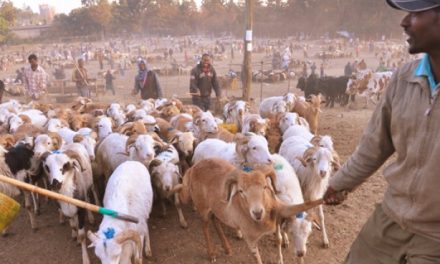
Tough mahangu for drier times

Kennedy Shindodi, founder of Brainchild Investments at a recent “Entrepreneurship Circle” event held in Katutura (Photograph by Daniel Kavishe)
22-year old Kennedy Shindodi, founder of Brainchild Investments was very eager to share his company’s new projects that he believes will prove to be vital to future food production. “Currently our company only has the one product out there, mahangu cake. It’s been accepted well in the country and is sold in restaurants and shops nationwide. We are now looking at our second product which is mahangu flour. We have identified a drought resistant strain from India and have developed an organisational structure with three companies that will be working together to develop this project.”
He stated that the project is targeting those under the poverty line as the new product promises to be cheap and affordable. Additionally he explained that the venture has identified other markets which have already shown interest in the par-millet. He said, based on the demand locally during the drought period and the request made by other countries to the EU in the face of a global food crisis, par-millet remains high as the produce of choice.
The strain which will be grown here has the ability to grow to about 2 metres length with only a week of water supply. This means that if there is only a 20-day continuous supply of rain within the mahango growing areas, the output will be a high yield, Shindodi explained. Alternatively, if the drought prevails, other systems are set in place.“We have a system in place with the new mahangu. We will take local subsistence farmers and form organisations in their various communities. We will then provide the necessary infrastructure for irrigation schemes. A cheap sub-surface drip irrigation system is the best for this type of crop production,” stated Shindodi. The hope is that several farmers with join the schemes so that overall output may be multiplied.
“We are also partnering with the Namibia Youth Service who trains local farmers. The trained local farmers will then partner with us to do the actual planting, growing and harvesting. The agreement with the youth service therefore focuses on the employment of the trained farmers while, in a further agreement, the Namibia Chamber of Commerce and Industry (NCCI) will handle the international trade.”
“We know of 61 countries where millet is consumed. Namibia ranks at 33. The biggest consumers are in West Africa like in Senegal and Nigeria. Sudan and other war areas where conflict abounds can therefore use Namibia which is a peaceful country to supply their food, provided their governments are willing to support our endeavours.”
The new product will be officially launched during the tourism expo that takes place at the end of this month.












































